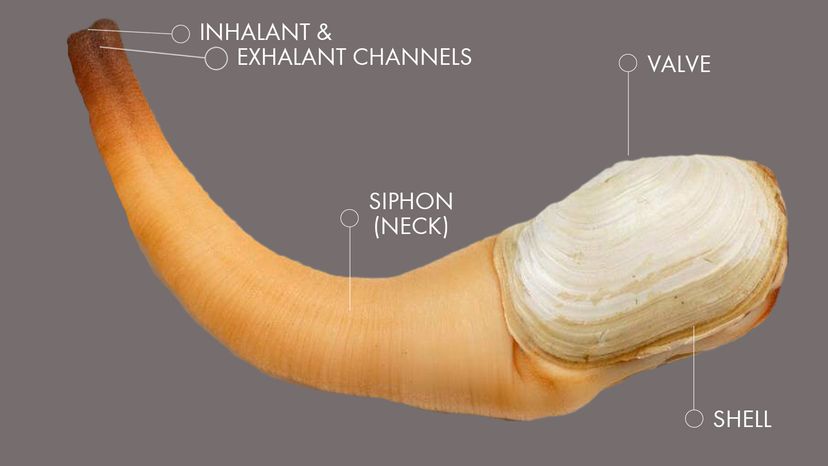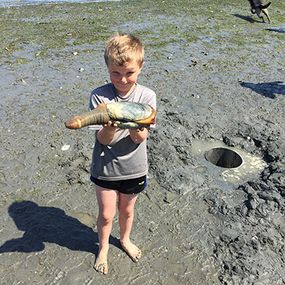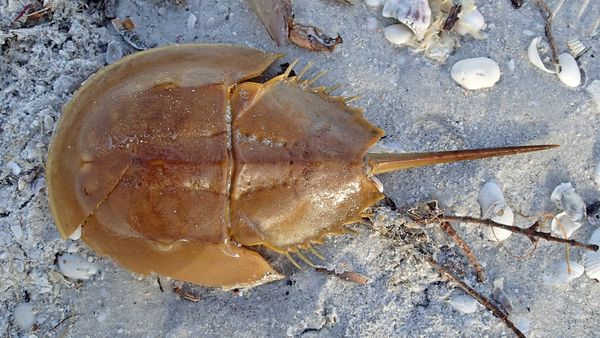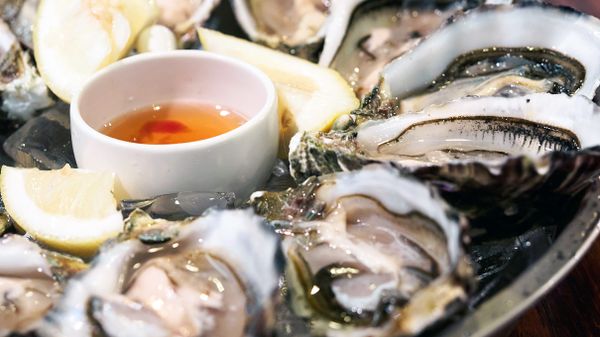
If you've ever read the word geoduck, you probably assumed it was some kind of duck that enjoyed maps, maybe. Oh, if only. That's not even close to what a geoduck is. In fact, if you pronounced it gee-oh-duck, you'd be wrong, too. While a waterfowl who's into geography might be pronounced gee-oh-duck, the name of this saltwater clam is actually pronounced "gooey duck." And these are not gooey and not ducks.
So geoducks are actually the world's largest burrowing clam, averaging 2 to 2.5 pounds (0.9 to 1.1 kilograms) each. Unlike the giant clam, which is almost all shell, the geoduck's shell is small compared to its soft body. The word geoduck comes from a Nisqually Tribe word meaning "dig deep."
Advertisement



